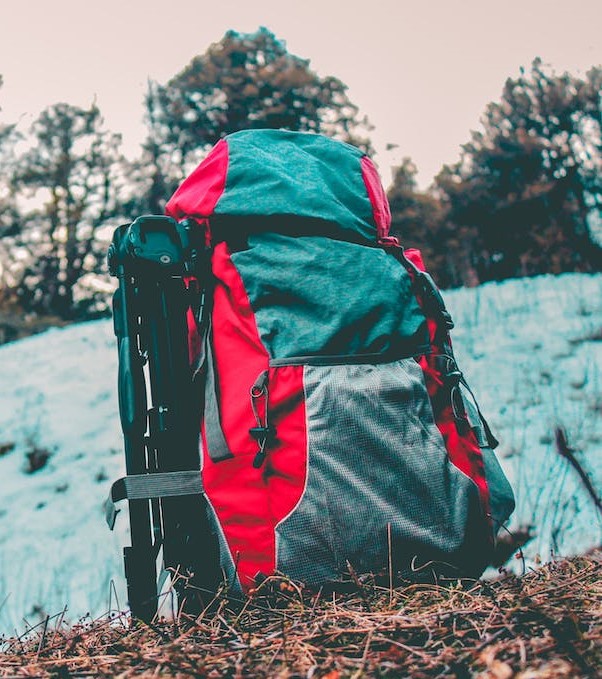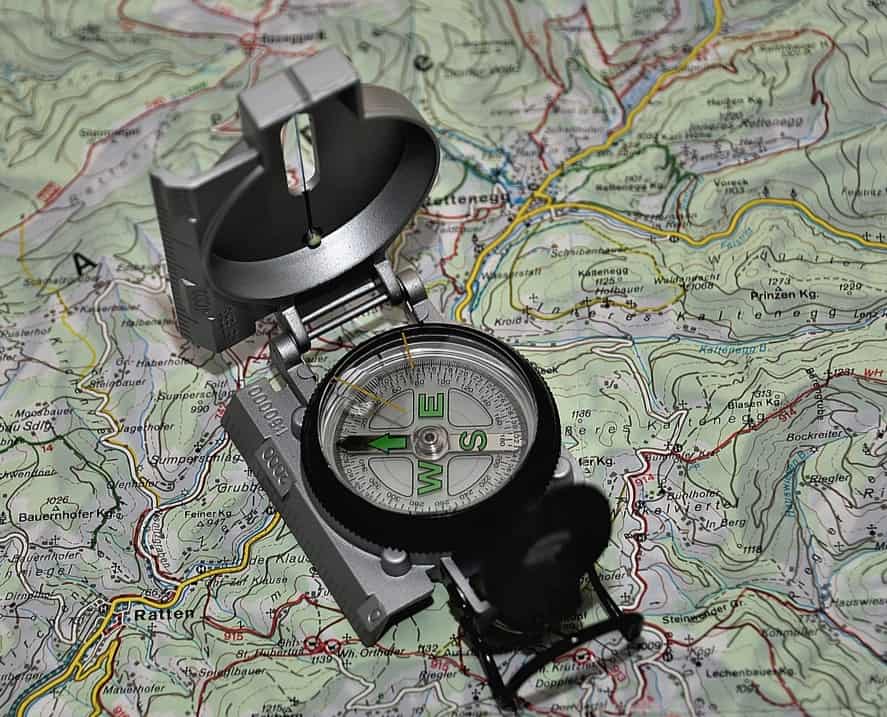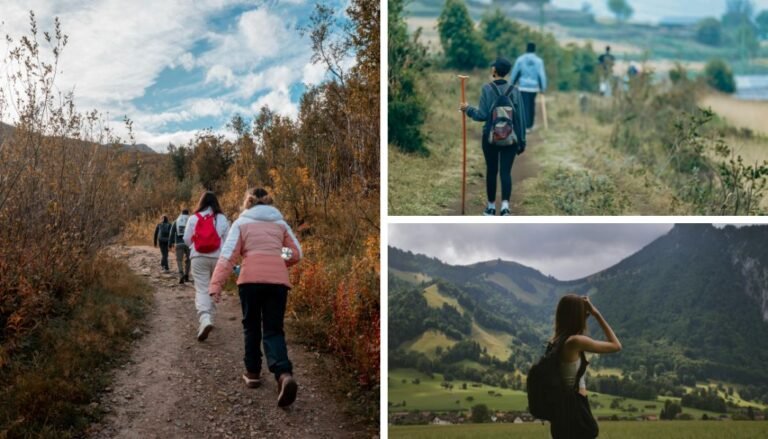The Ultimate Guide from Beginner to Pro with These Expert Tips and Tricks
In this comprehensive guide, we’ll delve deep into the expert tips and tricks that will elevate your hiking game to the next level. From essential equipment to navigation techniques, safety precautions, and even mental preparation, we’ll cover all aspects of hiking to ensure a fulfilling and enjoyable adventure every time you hit the trails.
Starting on the Right Path
Going for a hike is not just a physical activity; it’s a holistic experience that allows you to challenge yourself, reconnect with nature, and discover the beauty of the great outdoors. However, mastering the art of hiking requires more than just a good pair of boots and a trail map.
Essential Equipment for Hiking
Before embarking on any hiking expedition, having the correct gear to ensure your safety, comfort, and enjoyment along the way is crucial. Here’s a detailed look at the essential equipment every hiker should have:
Footwear
Purchase a good pair of hiking boots that are sturdy with good ankle support to provide stability on uneven terrain and to protect your feet. Opt for waterproof and breathable materials to keep your feet dry and comfortable.
Clothing
- Dress in layers. It will help regulate your body temperature effectively.
- Choose moisture-wicking fabrics that dry quickly and protect against UV rays.
- Remember essentials like a waterproof jacket, a hat, and gloves to shield you from the elements.

Backpack
Select a backpack or day pack with adjustable shoulder straps and padding for a comfortable fit. Look for features like multiple compartments, water bottle pockets, and a hydration system to stay organized and hydrated on the trail.
- Carry a detailed map, GPS device, or compass to help you navigate your route accurately.
- Familiarize yourself with the trail beforehand and keep track of landmarks to avoid getting lost.
- Remember to turn around and look back on the way you came. Landmarks always look different when you start your return trip down the trail.
First Aid Kit
Pack a lightweight first aid kit with essentials like bandages, antiseptic wipes, pain relievers, and blister treatment. Be prepared for minor injuries or emergencies while hiking.
Food and Water
To fuel your hike, bring energy bars, high-energy snacks like trail mix, and fresh fruits. Carry an adequate water supply or a water purification system to stay hydrated throughout your journey.
Emergency Essentials
Include items like a whistle, flashlight, rope, fire starter, and emergency shelter in your pack for unexpected situations. Bring a cell phone or satellite phone. Be prepared to handle emergencies and signal for help if needed.
Navigation is a fundamental skill for any hiker, whether you’re exploring well-marked trails or venturing into remote wilderness areas. Here are some expert tips for navigating the trails with confidence:
Plan Your Route
Before setting out, research your chosen trail thoroughly and plan your route using maps, guidebooks, or online resources. Take note of key landmarks, trail junctions, and potential hazards along your hike.
Stay Oriented
- Pay attention to your surroundings and use natural features like mountains, rivers, and rock formations to orient yourself.
- Keep track of your progress on the trail and refer to your map or GPS device regularly.
- Remember to turn around and look back on the way you came. Landmarks always look different when you start your return trip.
Carry a compass and learn how to use it with your map to determine your direction of travel. Practice taking bearings and triangulating your position to navigate accurately in any terrain. If you purchased a GPS a more expensive option. Practice using it and carry extra batteries.
Follow Trail Markers
Keep an eye out for trail markers, blazes, or cairns that indicate the correct path. Follow established routes whenever possible and avoid taking shortcuts or wandering off-trail to minimize the risk of getting lost.
Trust Your Instincts
If you find yourself off-course or unsure of your location, don’t panic. Take a moment to assess the situation, retrace your steps if necessary, and use your navigational skills to find your way back to familiar terrain.
Using a Compass

Navigating with a compass is a fundamental skill for hikers, especially when venturing into areas with limited or no trail markings. Here’s an expanded guide on how to effectively use a compass for navigation:
Understanding Your Compass
Before hitting the trails, it’s essential to understand the basic components of a compass. A typical compass is a magnetic needle pointing towards the Earth’s magnetic north pole. Surrounding the needle is a rotating bezel marked with degrees or cardinal directions (North, South, East, West). Some compasses include a transparent baseplate with a magnifying glass and a ruler for map reading.
Orienting the Compass
To use a compass accurately, you must orient it to align with the Earth’s magnetic field. Follow these steps to orient your compass:
- Hold the compass flat in your hand, ensuring it’s level, steady, and away from metal objects.
- Rotate your body until the magnetic compass needle aligns with the orienting arrow on the compass housing. The direction of the orienting arrow on the baseplate should now point toward the magnetic north.
- Keep the compass steady in this position, ensuring it doesn’t tilt or wobble.
Taking a Bearing
Once your compass is oriented, you can take your bearings and navigate in your desired direction. Here’s how to take a bearing:
- Identify your starting point and your destination on the map.
- Place the edge of the compass baseplate on the map, aligning it with the two points.
- Rotate the bezel until the orienting lines on the baseplate align with the north-south grid lines on the map.
- Hold the compass steady on the map and read the degree marking in the direction of the travel arrow. This will be your bearing.
Following a Bearing
With your bearing determined, you can follow it to navigate your intended route. Here’s how to follow a bearing:
- Hold the compass flat and in front of you, with the direction of the travel arrow pointing away from your body and metal objects.
- Rotate your body until the magnetic needle aligns with the orienting arrow in the compass housing.
- The direction of the travel arrow on the baseplate should now point in the direction of your bearing.
- Pick a landmark or distant object in that direction and start walking towards it, keeping the compass level and steady as you move.
Adjusting for Declination
It’s important to note that magnetic north, as indicated by your compass, may not always align perfectly with true north on a map due to declination. Declination is the angular difference between your location’s magnetic north and true north. To adjust for declination:
- Check the declination value for your location on a topographic map or online.
- If the declination is east, subtract the declination value from your bearing. If it’s west, add the declination value.
- Rotate the bezel on your compass to correct the bearing accordingly before setting out on your hike.
Practice Makes Perfect
Using a compass effectively takes practice and familiarity. Before heading into the wilderness, hone your navigation skills in familiar terrain or controlled environments. Practice taking bearings, following them, and orienting your compass until it becomes second nature.
By mastering the art of compass navigation, you’ll gain the confidence and independence to explore new trails and navigate safely through diverse landscapes, enhancing your hiking experience with each adventure.
Safety First: Tips for a Secure Hiking Experience
Safety should always be a top priority when hiking, regardless of your skill level or experience. Always let someone know where you will be hiking and what time you expect to return home by.
These are some essential safety tips to ensure a secure hiking experience:
Know Your Limits
Be honest about your fitness level and hiking abilities, and choose trails that match your skill level and physical condition. Start with shorter, more accessible hikes and gradually move up to more challenging terrain.
Check the Weather
Always check the weather forecast before going out on a hike, and be prepared for changing the conditions. Spring weather can be more unpredictable when out for your spring hike. Dress appropriately for the forecasted weather and be aware of potential hazards like thunderstorms, high winds, or extreme temperatures.
Stay Hydrated and Fueled
Drink plenty of water and eat regular snacks to stay hydrated and fueled during your hike. Dehydration, hunger, and fatigue can impair your judgment and physical performance, thereby increasing the risk of accidents or injuries on the trail. Remember to replenish your electrolytes.
Hike with a Buddy
Whenever possible, hike with a companion or in a group for added safety and support. Look out for each other, stay together on the trail, and communicate openly about any concerns or issues that might arise during the hike.
Leave No Trace
Respect the natural environment and minimize your impact on the wilderness by practicing Leave No Trace principles. Pack out all trash, stay on designated trails, and avoid disturbing wildlife or sensitive habitats.
Mastering Your Technique: Hiking with Efficiency
Efficient hiking techniques can make a world of difference in your overall enjoyment and endurance on the trail. Here are some tips for mastering your technique and hiking with efficiency. For training on long-distance hiking see our article: How to Build Endurance for Long-Distance Hiking.
Maintain Proper Posture
Stand tall with your head up, shoulders back, and core engaged to maintain good posture while hiking. Keep your weight centered over your feet and avoid slouching or leaning forward, which can lead to fatigue and discomfort.
Take Short, Controlled Steps
Take short, controlled steps to conserve energy and maintain stability on uneven terrain. Land softly on the balls of your feet and use your ankles, knees, and hips to absorb the shock and reduce strain on your joints.
Use Your Arms
Engage your arms to help propel you forward and maintain balance while hiking. Swing your arms in sync with your stride, keeping them relaxed and bent at the elbows. You may want to use walking poles. They help stabilize you on rough terrain.
Breathe Deeply and Regularly
Practice deep, rhythmic breathing to oxygenate your muscles and maintain steady energy levels during your hike. Take slow, deliberate breaths in through your nose and out through your mouth, focusing on exhaling fully to expel carbon dioxide and toxins from your body.
Fueling Your Adventure: Nutrition Tips for Hikers
Proper nutrition is essential for maintaining your energy levels and performance during long hikes. Here are some nutrition tips to fuel your adventure and optimize your hiking experience:
Start with a Well Balanced Breakfast
Begin your day with a well-balanced breakfast that includes complex carbohydrates, healthy fats, and protein to provide sustained energy for your hike. Opt for oatmeal with nuts and fruit, whole grain toast and eggs, or Greek yogurt with granola and berries.
Pack High-Energy Snacks
Pack lightweight, portable snacks that are high in carbohydrates and protein to fuel your hike and keep hunger at bay. Trail mix, energy bars, dried fruit, nuts, and jerky are excellent options for on-the-go nutrition.
Stay Hydrated
Drink plenty of water before, during, and after your hike to stay hydrated and prevent dehydration. Carry a reusable water bottle or hydration pack and sip regularly to replenish fluids lost through sweat and exertion. Make sure you replenish your electrolytes as well.
Eat Regularly
Eat small, frequent meals and snacks throughout your hike to maintain steady energy levels and avoid fatigue. Aim to refuel every hour or so with a combination of carbohydrates, protein, and electrolytes to sustain your endurance and performance.
Recover Properly
After your hike, replenish your energy stores and support muscle recovery with a balanced meal or snack that includes carbohydrates to refuel glycogen stores, protein to repair muscle tissue, and fluids to rehydrate your body. Consider options like a turkey and avocado sandwich, a smoothie with protein powder, or a quinoa salad with vegetables and grilled chicken.
Mental Preparation: Mindfulness and Enjoyment on the Trails
Hiking is not just a physical activity; it’s also an opportunity to cultivate mindfulness, connect with nature, and find joy in the present moment. Here are some tips for mental preparation and enjoying your hike to the fullest:
Set Intentions
Before starting your hike, take a moment to set intentions for your journey. Whether it’s to find peace and solitude, challenge yourself physically, or enjoy the beauty of nature, clarify your goals and motivations to guide your experience.
Practice Mindfulness
Be present and attentive to your surroundings as you hike, engaging your senses to fully experience all the sights, sounds, and sensations of the natural world. Notice the colors of the foliage, the sounds of birdsong, the feel of the trail beneath your feet, and the scent of wildflowers in the air.
Focus on Your Breath
Use your breath as an anchor to keep you grounded and centered during your hike. Practice deep, diaphragmatic breathing to calm your mind, reduce your stress, and enhance your overall well-being as you move through the landscape.
Embrace Challenges
View challenges and obstacles along the trail as opportunities for growth and learning rather than setbacks. Approach steep climbs, rocky terrain, or adverse weather conditions with a positive attitude and a willingness to adapt and overcome the situation.
Celebrate Achievements
Celebrate and acknowledge your accomplishments along the way, whether it’s reaching a scenic viewpoint, completing a difficult section of trail, or simply enjoying a moment of peace and solitude in nature. Take pride in your progress and savor the satisfaction of a well-done job.
Embracing the Journey
Hiking is more than just a physical activity; it’s a journey of self-discovery, exploration, and connection with the natural world by mastering the art of hiking with expert tips and tricks that can enhance your skills, confidence, and enjoyment on the trails. From essential equipment and navigation techniques to safety precautions, efficient hiking techniques, nutrition tips, and mindfulness practices, this comprehensive guide has provided the tools and knowledge you need to embark on unforgettable hiking adventures. So, lace up your boots, pack your backpack, and venture out onto the trails with curiosity, wonder, and appreciation for the beauty and bounty of the great outdoors. If you interested in camping, then check out our post on camping.
Sign up for our newsletter to get a free backpacking checklist.
FAQ Section
How do I choose the proper hiking boots?
When selecting hiking boots, consider factors such as terrain, weather conditions, foot shape, and personal preferences. Look for boots with sturdy construction, good ankle support, waterproofing, and a comfortable fit.
How do I prevent blisters while hiking?
To prevent blisters while hiking, wear properly fitting socks and boots, and consider using blister prevention products like moleskin or blister patches on hot spots or areas prone to friction. Keep your feet clean and dry by wearing socks that wick away moisture and taking regular breaks to rest and air out your feet during long hikes.
What should I do if I encounter wildlife while hiking?
If you encounter wildlife while hiking, maintain a safe distance and observe without disturbing or approaching the animals. Avoid sudden movements or making loud noises that could startle or agitate them if you encounter aggressive wildlife; slowly back away and give them plenty of space to retreat.
What should I do if I get lost on the trail?
If you get lost on the trail, stay calm and assess your surroundings. Use navigation tools like a map, compass, or GPS device to determine your location and find your way back to familiar terrain. If you cannot find your way, stay put and signal for help using a whistle, flashlight, or other signaling device.
Disclaimer: This blog post contains affiliate links




